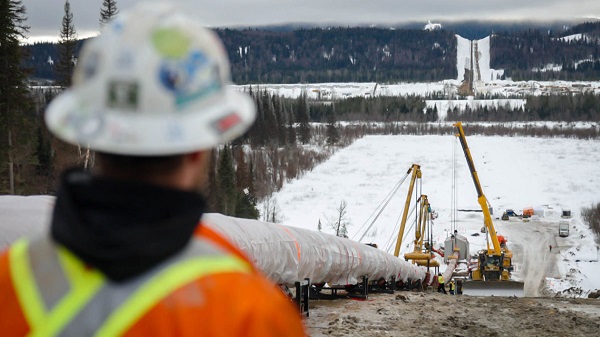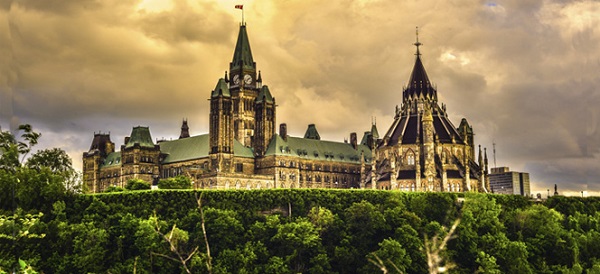Alberta
Alberta Budget 2024 – Health, Education, and Affordability announcements

Putting Albertans and Alberta families first
Budget 2024 is a responsible plan that puts Albertans and their families first by investing in strong health care, a modern education system and supports to keep life affordable.
Alberta’s government will ensure that the services and supports Alberta families rely on will be there for them. Budget 2024 continues to prioritize the delivery of high-quality, reliable health services across the province, with funding to continue planning the stand-alone Stollery Children’s Hospital, attract family physicians to rural areas and add more mental health and addiction facilities.
“With Budget 2024, we are ensuring that our province remains the best place to live and raise a family. We are investing in programs and services like new school builds, improved access to doctors and affordable housing to help Albertans stay healthy and build a successful future for themselves and their families.”
Budget 2024 highlights – Health care
- $475 million to modernize Alberta’s primary health care system, including:
- $200 million over two years to improve access to family physicians.
- $10 million for primary health care initiatives in Indigenous communities.
- $15 million to further develop a compensation model for nurse practitioners.
- $6.6 billion for physician compensation and development, up from $6.1 billion in Budget 2023.
- $1 billion over three years to transform the continuing care system to shift care to the community, enhance workforce capacity, increase choice and innovation, and improve the quality of care within the continuing care sector.
- $287 million over four years, part of a bilateral agreement with the federal government, for new mental health and addiction facilities, as well as for targeted supports for children and youth, adults and Indigenous communities.
- $62.4 million over three years to create two rural health professional training centres and expand physician education.
- $20 million over the next three years, including $17 million in new funding, to continue planning for a stand-alone Stollery Children’s Hospital.
- $35 million in capital funding over the next three years to purchase new emergency medical services vehicles and ambulances, upgrade the existing fleet and acquire additional equipment.
- $10 million over the next three years to create additional mental health professional spaces in post-secondary schools.
- $1.55-billion total expense to continue building the Alberta Recovery Model and ensure anyone suffering from the deadly disease of addiction or facing mental health challenges has an opportunity to pursue recovery.
“In Budget 2024, Alberta’s government is continuing to prioritize the delivery of high-quality, reliable health services across the province. This year’s record investment of $26.2 billion in health care will help us continue toward our goals of improving primary health care, adding capacity, reducing wait times, growing the workforce and advancing the Healthcare Action Plan.”
“Budget 2024 gives hope to those suffering from the deadly disease of addiction or facing mental health challenges. We are proud to invest in the Alberta Recovery Model and provide life-saving addiction treatment and care for those in need.”
Budget 2024 invests in a bright future for Alberta students with new and modernized schools, learning supports for students of all abilities and post-secondary programs to help build a skilled workforce.
Budget 2024 highlights – K-12 and post-secondary education
- $1.9 billion in capital funding over the next three years for planning, design or construction of new and modernized school projects across the province. This includes $681 million in new funding for 43 priority projects that will create 35,000 new or modernized student spaces.
- A total of 98 school projects are in various stages of the planning, design and construction process in 2024.
- $842 million in new operating funding over the next three years to further support enrolment growth, bringing additional enrolment-based funding to more than $1.2 billion over the next three years to enable schools to hire more than 3,100 education staff.
- More than $1.5-billion operating expense funding for educational learning supports for vulnerable students, children with specialized learning needs and other students requiring additional supports.
- $26 million over the next three years in additional funding for Program Unit Funding (PUF). PUF will total $209 million in the 2024-25 fiscal year.
- $103 million in capital funding over three years to increase modular classroom spaces to address the most urgent needs for additional student spaces across the province.
- $55 million in capital funding starting in 2025-26 for the University of Calgary’s multidisciplinary hub to add 1,000 spaces in science, technology, engineering and math (STEM) programs.
- $63 million in capital funding over the next three years for Olds College to renovate and expand student spaces in the WJ Elliot Building.
- $43 million in capital funding over the next three years for NAIT’s trades and technology learning facility.
- $13 million in capital funding over the next three years for Red Deer Polytechnic to create a new space to help businesses conduct applied research.
“The Alberta Advantage is back and booming, and people from across Canada and around the world are once again flocking to our incredible province. This of course puts added pressures on our schools, and our government is ready to help. Budget 2024 will support 43 new school projects to create and update 35,000 more student spaces. We’re providing $842 million in new funding to help our school boards hire more than 3,000 teachers and educational staff over the next three years. We will also boost funding to vulnerable students by increasing funding to the PUF program by $26 million.”
“Demand for skilled trades workers and graduates from STEM programs is projected to increase as our economy continues to grow and diversify. That’s why Alberta’s government is making targeted investments in post-secondary institutions to create more opportunities for students in high-demand fields of study.”
Although inflation is expected to ease this year, many families are still struggling with high grocery and utility costs. Budget 2024 helps keep life affordable and supports Albertans most affected by inflation.
Budget 2024 highlights – Affordability
- $717 million in capital grants to give Albertans and families access to more affordable housing, in line with Stronger Foundations – Alberta’s 10-year strategy designed to increase affordable housing supply and supports for Albertans.
- $355 million for the Alberta Child and Family Benefit to provide lower-income families with benefits, an increase of $31 million from last fiscal year.
- $980 million in savings for Albertans in 2024-25 because of indexation of personal income taxes.
- Budget 2024 formalizes the schedule to phase in a new personal income tax bracket on the first $60,000 of income, which would save individual taxpayers up to $760 per year once the tax cut is fully implemented.
- 25 per cent discount for seniors on personal registry services and medical driving tests, scheduled to come into effect in 2024-25.
- $38-million increase to operational funding for the Seniors Lodge, Social Housing and Specialized Housing and Rental Assistance programs in 2024-25.
- $22 million increased operating expense over the next three years to index foster, kinship and other caregiver rates, which will support stronger foundations for children in care and provide them with the care and protection they need for a brighter and secure future.
“With each strategic investment in affordable housing, reducing homelessness and supporting our seniors and people with disabilities, we are strengthening our communities and empowering vulnerable Albertans to thrive and succeed.”
“Our government is helping make life easier and more affordable for Alberta families. By helping foster caregivers increase stability for children and youth in care, and ensuring survivors of domestic and sexual violence have the resources they need to heal, we’re enabling connections that will lead to a brighter future for Alberta families.”
Budget 2024 is a responsible plan to strengthen health care and education, build safe and supportive communities, manage the province’s resources wisely and promote job creation to continue to build Alberta’s competitive advantage.
Alberta
Owner sells gas for 80 cents per litre to show Albertans how low prices ‘could’ be

Undoubtedly some of the motorists driving past The Whistle Stop Cafe at Mirror on Tuesday morning thought it was an April Fools prank. It wasn’t.
Chris Scott, owner of the gas station at The Whistle Stop Cafe offered a one day promotion on April 1st. Scott sold 8000 litres of regular gasoline for $0.80/ litre.
The promotion was funded by Scott and the Alberta Prosperity Project. In this video posted to his social media, Chris Scott explains why they did it.
Alberta
The beauty of economic corridors: Inside Alberta’s work to link products with new markets

From the Canadian Energy Centre
Q&A with Devin Dreeshen, Minister of Transport and Economic Corridors
CEC: How have recent developments impacted Alberta’s ability to expand trade routes and access new markets for energy and natural resources?
Dreeshen: With the U.S. trade dispute going on right now, it’s great to see that other provinces and the federal government are taking an interest in our east, west and northern trade routes, something that we in Alberta have been advocating for a long time.
We signed agreements with Saskatchewan and Manitoba to have an economic corridor to stretch across the prairies, as well as a recent agreement with the Northwest Territories to go north. With the leadership of Premier Danielle Smith, she’s been working on a BC, prairie and three northern territories economic corridor agreement with pretty much the entire western and northern block of Canada.
There has been a tremendous amount of work trying to get Alberta products to market and to make sure we can build big projects in Canada again.
CEC: Which infrastructure projects, whether pipeline, rail or port expansions, do you see as the most viable for improving Alberta’s global market access?
Dreeshen: We look at everything. Obviously, pipelines are the safest way to transport oil and gas, but also rail is part of the mix of getting over four million barrels per day to markets around the world.
The beauty of economic corridors is that it’s a swath of land that can have any type of utility in it, whether it be a roadway, railway, pipeline or a utility line. When you have all the environmental permits that are approved in a timely manner, and you have that designated swath of land, it politically de-risks any type of project.
CEC: A key focus of your ministry has been expanding trade corridors, including an agreement with Saskatchewan and Manitoba to explore access to Hudson’s Bay. Is there any interest from industry in developing this corridor further?
Dreeshen: There’s been lots of talk [about] Hudson Bay, a trade corridor with rail and port access. We’ve seen some improvements to go to Churchill, but also an interest in the Nelson River.
We’re starting to see more confidence in the private sector and industry wanting to build these projects. It’s great that governments can get together and work on a common goal to build things here in Canada.
CEC: What is your vision for Alberta’s future as a leader in global trade, and how do economic corridors fit into that strategy?
Dreeshen: Premier Smith has talked about C-69 being repealed by the federal government [and] the reversal of the West Coast tanker ban, which targets Alberta energy going west out of the Pacific.
There’s a lot of work that needs to be done on the federal side. Alberta has been doing a lot of the heavy lifting when it comes to economic corridors.
We’ve asked the federal government if they could develop an economic corridor agency. We want to make sure that the federal government can come to the table, work with provinces [and] work with First Nations across this country to make sure that we can see these projects being built again here in Canada.
-

 2025 Federal Election2 days ago
2025 Federal Election2 days agoJoe Tay Says He Contacted RCMP for Protection, Demands Carney Fire MP Over “Bounty” Remark
-

 2025 Federal Election2 days ago
2025 Federal Election2 days agoHong Kong-Canadian Groups Demand PM Carney Drop Liberal Candidate Over “Bounty” Remark Supporting CCP Repression
-

 2025 Federal Election2 days ago
2025 Federal Election2 days agoPoilievre To Create ‘Canada First’ National Energy Corridor
-

 2025 Federal Election2 days ago
2025 Federal Election2 days agoAlcohol tax and MP pay hike tomorrow (April 1)
-

 2025 Federal Election2 days ago
2025 Federal Election2 days agoChina Election Interference – Parties Received Security Briefing Days Ago as SITE Monitors Threats to Conservative Candidate Joe Tay
-

 2025 Federal Election2 days ago
2025 Federal Election2 days agoFixing Canada’s immigration system should be next government’s top priority
-

 2025 Federal Election1 day ago
2025 Federal Election1 day agoPoilievre, Conservatives receive election endorsement from large Canadian trade union
-

 Bruce Dowbiggin2 days ago
Bruce Dowbiggin2 days agoAre the Jays Signing Or Declining? Only Vladdy & Bo Know For Sure






